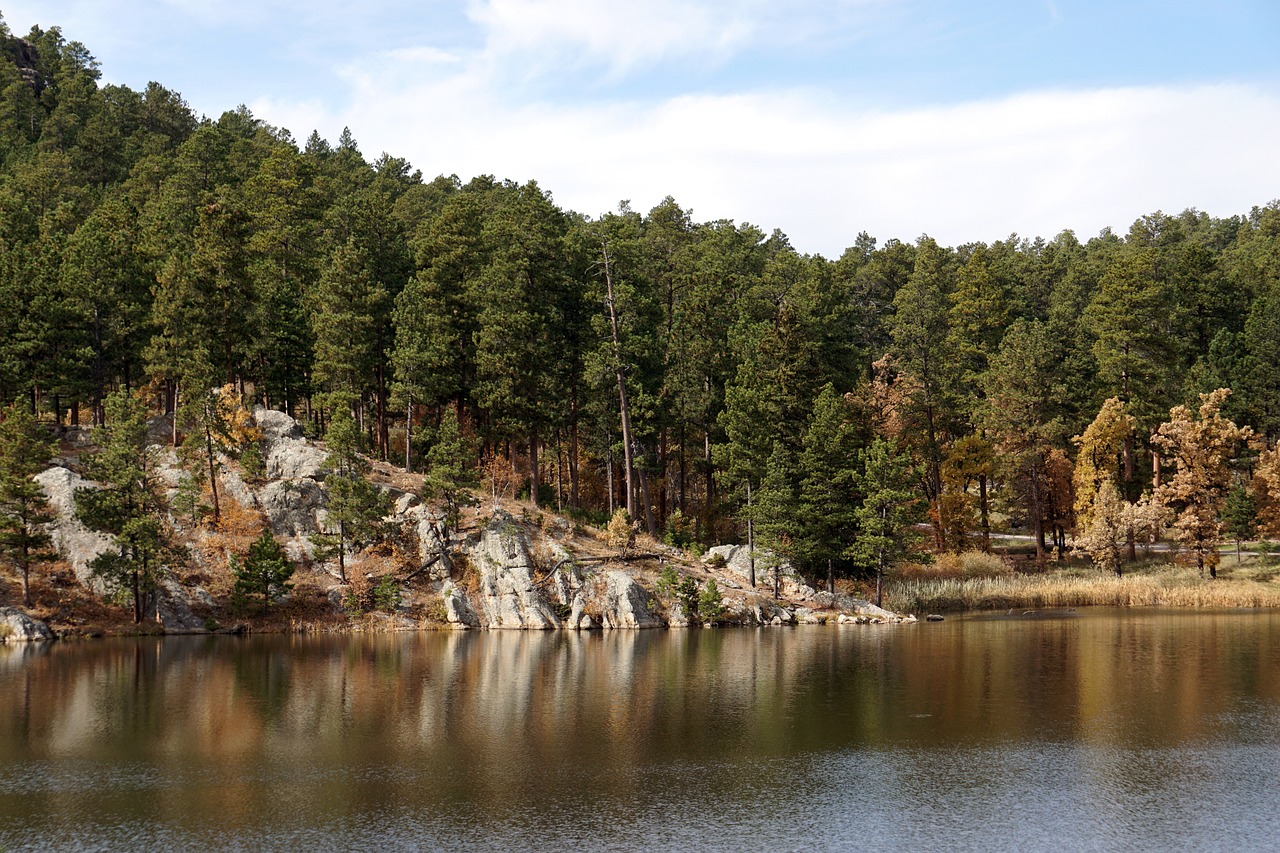
The Black Hills of South Dakota, a region steeped in history and natural beauty, is also the setting for one of the state’s most intriguing legends: the Black Hills Serpent. This mysterious creature, said to dwell in the depths of the area’s lakes and rivers, has captured the imaginations of locals and visitors alike. The legend of the Black Hills Serpent blends Native American folklore, frontier tales, and modern sightings, creating a rich tapestry of mystery and wonder.
The Origins of the Legend
The legend of the Black Hills Serpent dates back to the Native American tribes that originally inhabited the region, including the Lakota Sioux. According to their oral traditions, a large, serpent-like creature, known as the “Unk Cekula,” inhabited the waters of the Black Hills. The Unk Cekula was feared and revered, often seen as a powerful spirit or guardian of the natural world. The creature was said to possess supernatural abilities, including the power to control the weather and bring both good fortune and disaster.
Frontier Era Tales
As European settlers moved into the Black Hills during the 19th century, they brought with them their own stories and interpretations of the region’s mysteries. The discovery of gold in the Black Hills in the 1870s led to a rush of prospectors and pioneers, many of whom reported strange sightings of a large, snake-like creature in the area’s lakes and rivers. These tales often described a massive serpent, with a body as thick as a tree trunk and a head resembling that of a dragon or prehistoric reptile.
Modern Sightings
The legend of the Black Hills Serpent has persisted into modern times, with numerous sightings reported over the past century. Witnesses have described seeing a large, undulating shape moving through the water, often leaving a significant wake in its path. Some accounts also include descriptions of the creature surfacing, revealing a long, sinuous body covered in dark, scaly skin.
Notable Sightings and Encounters
The Custer Expedition (1874)
One of the earliest documented sightings of the Black Hills Serpent comes from the 1874 Custer Expedition. Led by Lieutenant Colonel George Armstrong Custer, the expedition was tasked with exploring the Black Hills and assessing its potential for gold mining. During their journey, members of the expedition reported seeing a large, serpentine creature in a lake near their camp. The sighting was noted in several journals and quickly became part of the local lore.
The Fishermen’s Encounter (1923)
In 1923, a group of fishermen on Pactola Lake reported an encounter with the Black Hills Serpent. According to their account, they saw a large, dark shape moving beneath the surface of the water. As they watched, the creature surfaced, revealing a long, sinuous body and a head that resembled that of a dragon. The fishermen quickly rowed to shore, shaken by their encounter and convinced they had seen something extraordinary.
The Tourist Sighting (1998)
In a more recent sighting, a family visiting from out of state reported seeing the Black Hills Serpent while hiking near Sylvan Lake. They described a large, snake-like creature moving through the water, creating a significant disturbance as it swam. The family managed to take a few blurry photographs, which were later shared with local media and sparked renewed interest in the legend.
Theories and Explanations
The legend of the Black Hills Serpent has inspired a variety of theories attempting to explain the sightings and accounts. These theories range from scientific explanations to more fantastical ideas:
Misidentifications
One plausible explanation for the sightings is that they are cases of misidentification. Large fish, such as sturgeon, which can grow to impressive sizes and have a prehistoric appearance, might account for some of the reports. Additionally, floating logs, submerged debris, and even otters swimming in a line could be mistaken for a serpent-like creature.
Natural Phenomena
Some researchers suggest that natural phenomena, such as underwater currents or seismic activity, could create illusions of a large creature moving through the water. The unique geological features of the Black Hills, including its lakes and underground springs, might contribute to unusual water movements that could be mistaken for a serpent.
Surviving Prehistoric Creatures
A more speculative theory posits that the Black Hills Serpent could be a surviving prehistoric creature, such as a plesiosaur or another ancient marine reptile. While this theory lacks scientific evidence and is generally considered unlikely, it remains a popular idea among cryptozoology enthusiasts.
Native American Legends
The Native American legends of the Unk Cekula provide a cultural context for the sightings and stories. The serpent may be a symbolic representation of natural forces or a guardian spirit, deeply rooted in the mythology and spiritual beliefs of the region’s indigenous people.
Cultural Impact and Legacy
The legend of the Black Hills Serpent has become an integral part of South Dakota’s cultural heritage, contributing to the mystique and allure of the Black Hills region. It has inspired books, articles, and local folklore, and continues to be a topic of interest for tourists and locals alike.
The legend also plays a role in the tourism industry, with local businesses and tour operators occasionally offering “serpent sighting” tours and themed merchandise. The Black Hills Serpent is featured in local festivals and storytelling events, ensuring that the legend remains a vibrant part of the community’s cultural landscape.
Conclusion
The legend of the Black Hills Serpent is a captivating blend of history, folklore, and mystery. Whether rooted in Native American mythology, misidentifications, or something more fantastical, the tale continues to fascinate and intrigue. As long as the lakes and rivers of the Black Hills shimmer in the sunlight, the story of the Black Hills Serpent will endure, inviting both skeptics and believers to ponder the unknown depths and the secrets they may hold.